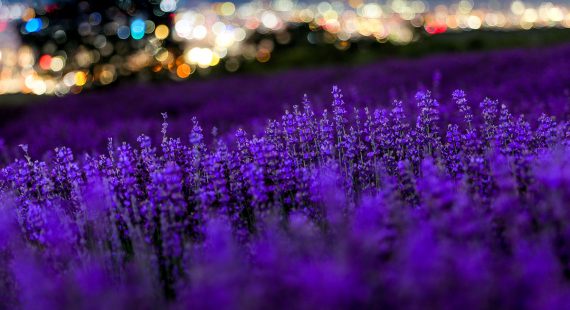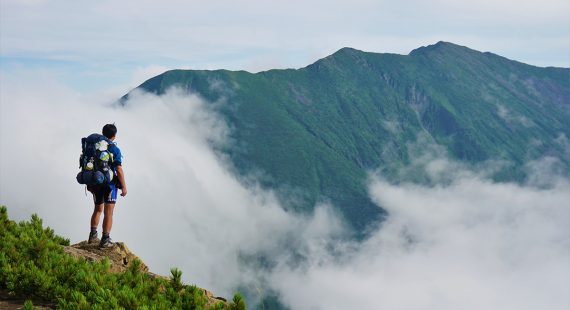Table of Contents:
1. Otaru Port and Otaru Canal Area: Downtown
2. Northern Area: Shukutsu
3. Western Area: Ranshima, Shioya, and Otamoi
4. Eastern Area: Otaru-Chikko and Zenibako
5. Mount Tengu
What comes to mind when you think of Otaru? Is it the nostalgic canals that mirror the town’s rich history, the charming glass shops with their delicate artistry, the fresh seafood that tempts your taste buds, or perhaps the indulgent cheesecakes? Maybe it’s the grandeur of the Herring Palace, echoing tales of a bygone era. All of these images are true. Today, Otaru is one of the most beloved destinations in Hokkaido, easily accessible from Sapporo, and it draws visitors with its unique blend of history and modern charm.
Otaru’s story is deeply intertwined with the ocean. The town blossomed as a hub of trade, thanks to its port and the construction of canals. During the Edo period, merchant ships known as ‘kitamaebune’ sailed the Sea of Japan, transforming Otaru into a bustling center of commerce. Later, as Hokkaido developed and Japan modernized, Otaru thrived, earning its reputation as the leading city of northern Japan. The echoes of its prosperous past still linger in the town today.
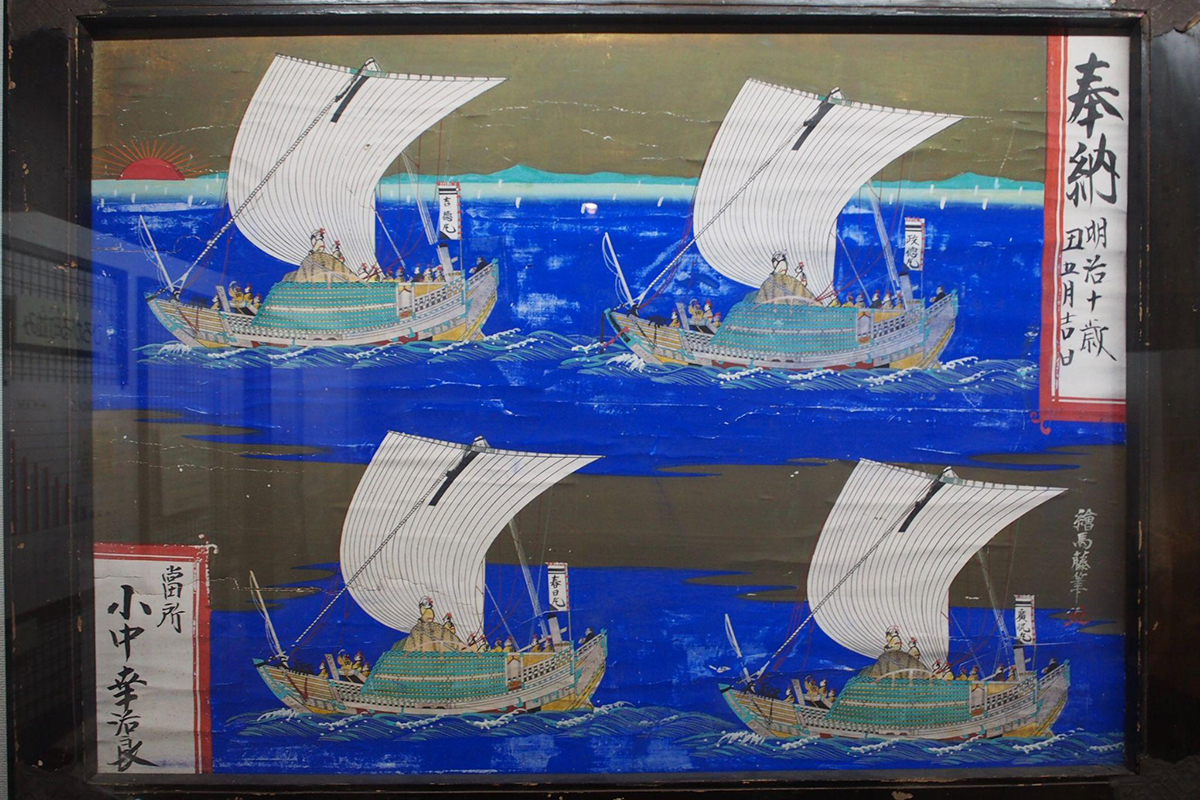
As you wander through Otaru, you’ll discover that many of the old bank buildings have been transformed into art galleries and museums, while the grand shops of former merchants have found new life as cafes and boutiques. This seamless blend of old and new captures the essence of Otaru’s spirit, offering visitors a chance to experience a town where history meets the present, all beginning with the stories woven by the sea.
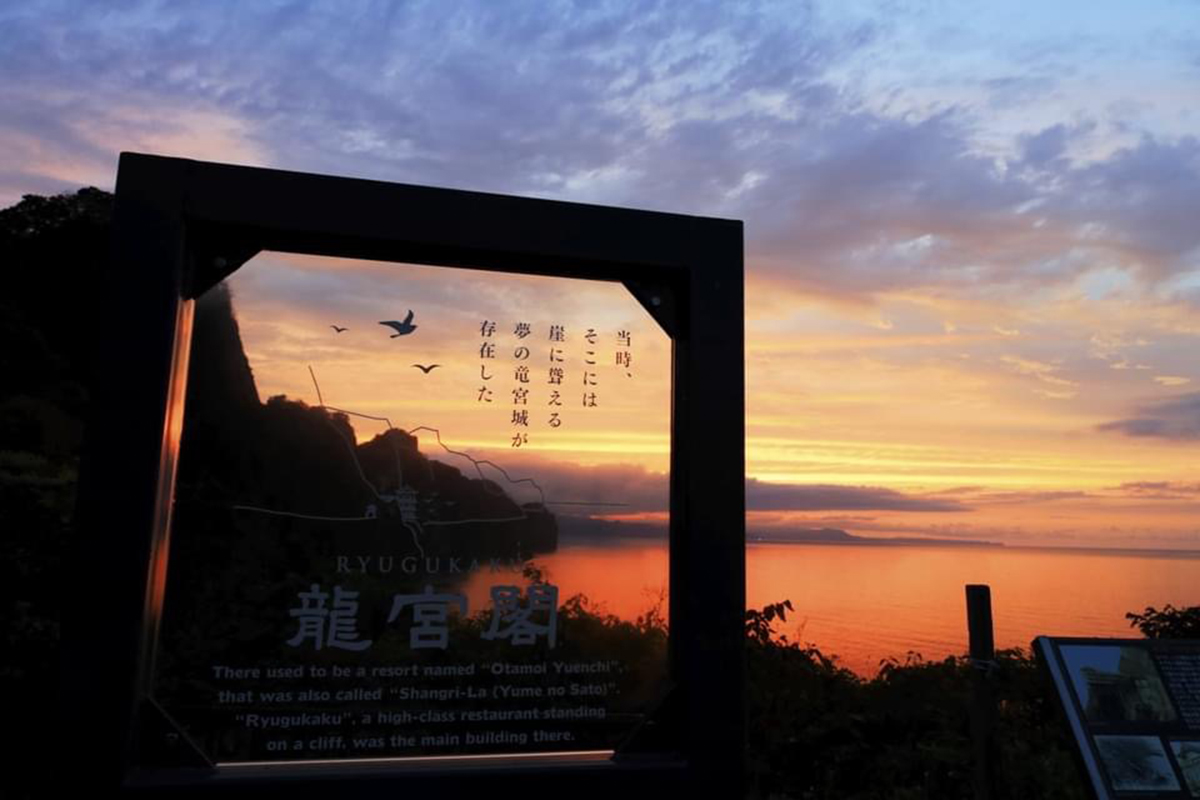
Let your trip to Otaru be an unforgettable journey through time, where you’ll be captivated by its maritime tales and coastal beauty!
Otaru Port and Otaru Canal Area: Downtown
The waters of Otaru have been bustling with herring fishing since the Edo period, when dried and pressed boiled herring was in high demand as fertilizer. As merchant ships began docking at Otaru’s port, the town transformed into a thriving commercial hub.
In 1880, Otaru became the site of Hokkaido’s first railway, leading to a steady influx of coal and timber from across the region. This development further solidified Otaru’s status as a key port for shipping goods and supplying resources to inland areas. As Otaru evolved into an international trade port, it became the gateway to Hokkaido, playing a crucial role in supporting the region’s economy during that era.
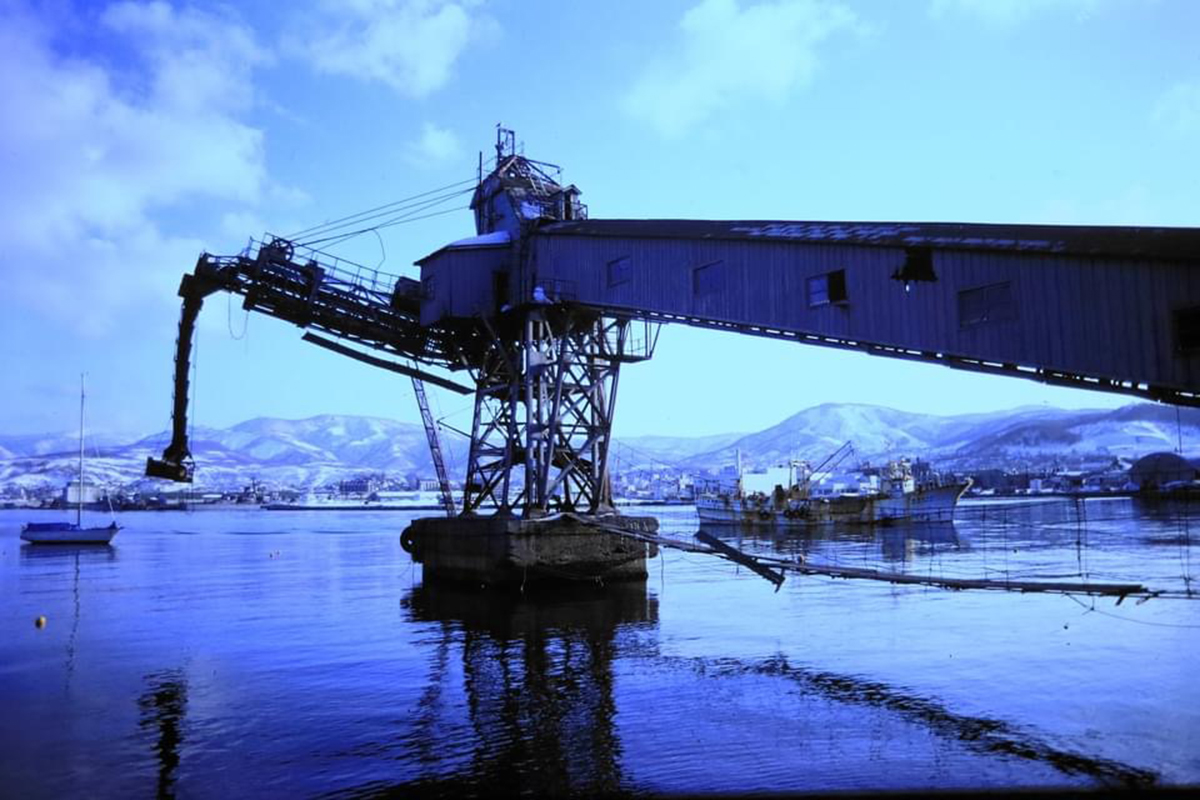
Did you know that the canal, now a symbol of Otaru, was once part of the sea just over a century ago? In those days, Otaru’s port was constantly congested with ships transporting goods from Hokkaido to Honshu. To alleviate this congestion, the coastline was reclaimed to increase docking space, giving birth to the Otaru Canal. Completed in 1923, the canal allowed barges to transport goods from offshore vessels to warehouses along the shore. Otaru, then the leading economic city in northern Japan, was alive with vibrant activity centered around this canal, which became a symbol of the town’s seafaring history.
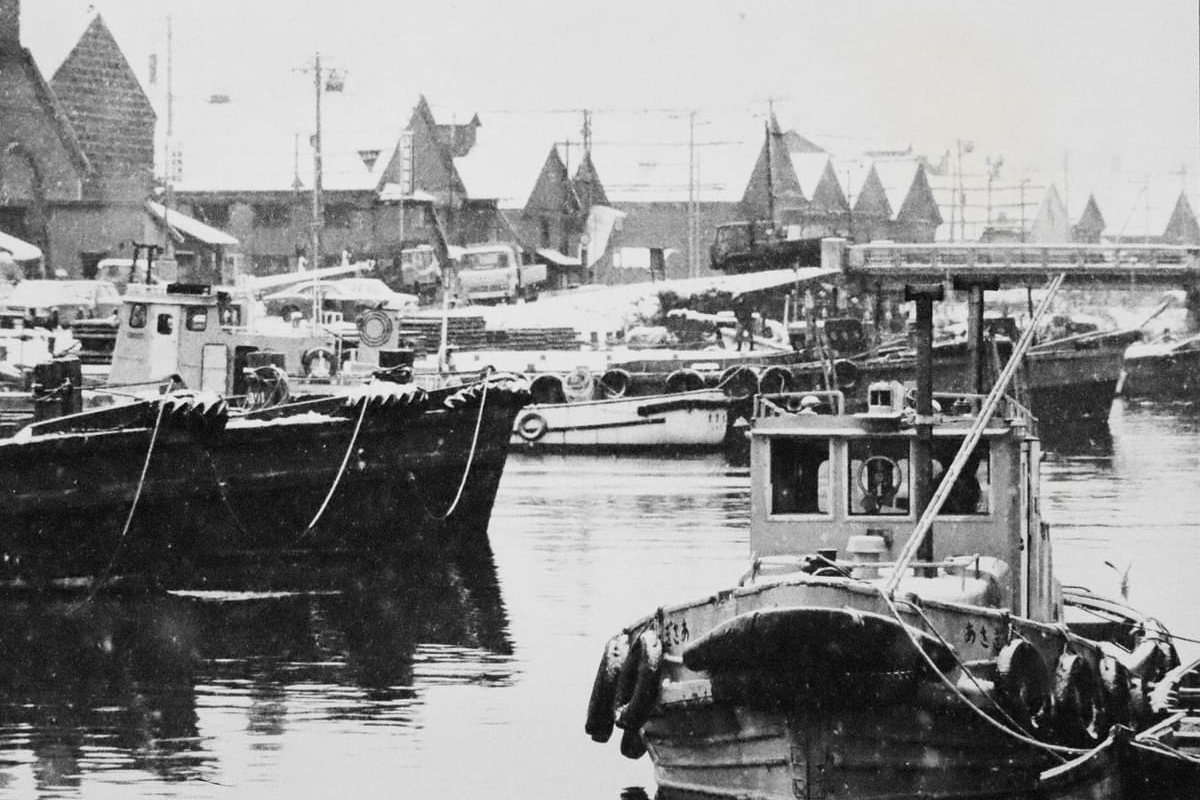
When you visit Otaru, you’ll notice the town’s strong glassmaking tradition. Before plastics, glass containers were widely used, leading to the production of glass floats for fishing, which became increasingly in demand. Even the oil lamps used at the time were made of glass. However, the advent of electricity and plastic made glass production a tougher industry. A new chapter began in the 1970s when this area was still a quiet wholesale district, far from the bustling Sakaimachi Street we know today. A century-old warehouse was repurposed, and stylish lamps and other glass items, not just practical but also decorative, were sold as souvenirs. This revival successfully passed on the glassmaking craft to future generations.
One place where you can feel the history of Otaru’s glassmaking is the Lamp Hall in Kitaichi Glass Building No. 3. Every morning at opening time, staff carefully light 167 kerosene lamps one by one, transforming the hall into a magical space. Why not enjoy a meal made with local Hokkaido ingredients while listening to the beautiful music played on a Steinway piano?
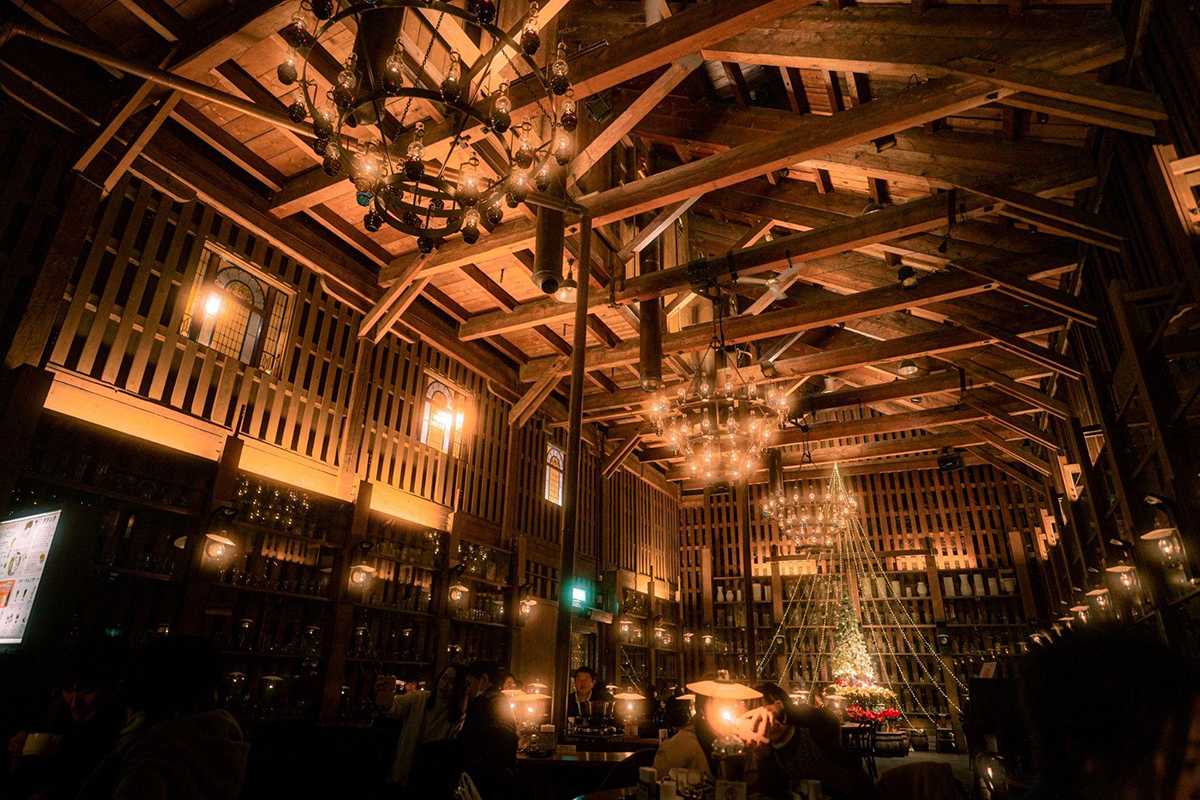
If you visit Otaru, you will definitely want to see the Otaru Canal and glass products. These are part of the history of Otaru’s sea, and they are not just historical artifacts but are still integral to Otaru’s identity today.
A must-try activity in Otaru is the Otaru Canal Cruise Tour! This unique experience takes you on a journey through the iconic Otaru Canal and out into the connected Otaru Port. During peak season there are over 20 trips, departing every 30 minutes. The 40-minute tour on a small, eco-friendly boat offers a nostalgic and picturesque view of the town from the water, a perspective you won’t get from the land. Your knowledgeable captain will guide you through the canal’s history and the town’s stories, sharing intriguing anecdotes along the way. Audio guidance is also available during the tour in English, Chinese, and Korean.
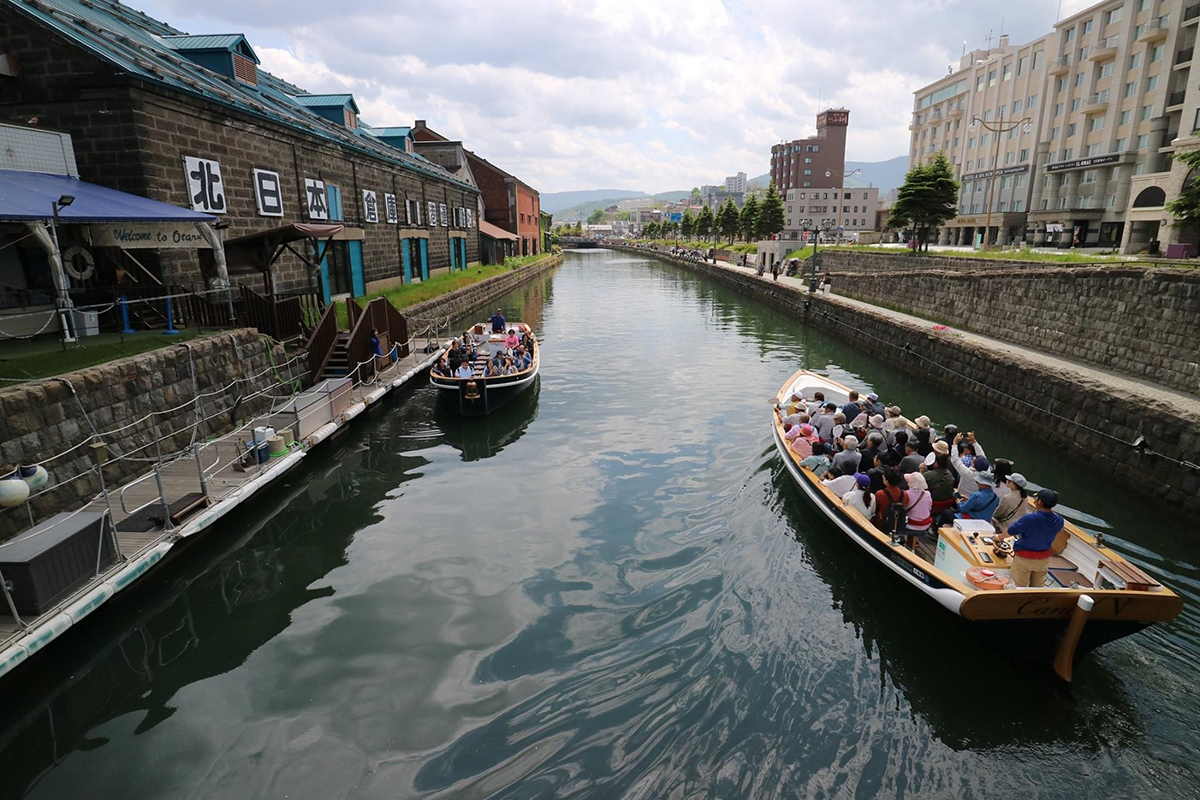
During the Day Cruise Tour, you can fully appreciate the architecture and scenery under the clear daylight. For a more romantic atmosphere, the Night Cruise Tour is the perfect choice, as the reflections of the building lights and 63 gas lamps along the promenade dance on the canal’s surface, creating a magical ambiance.
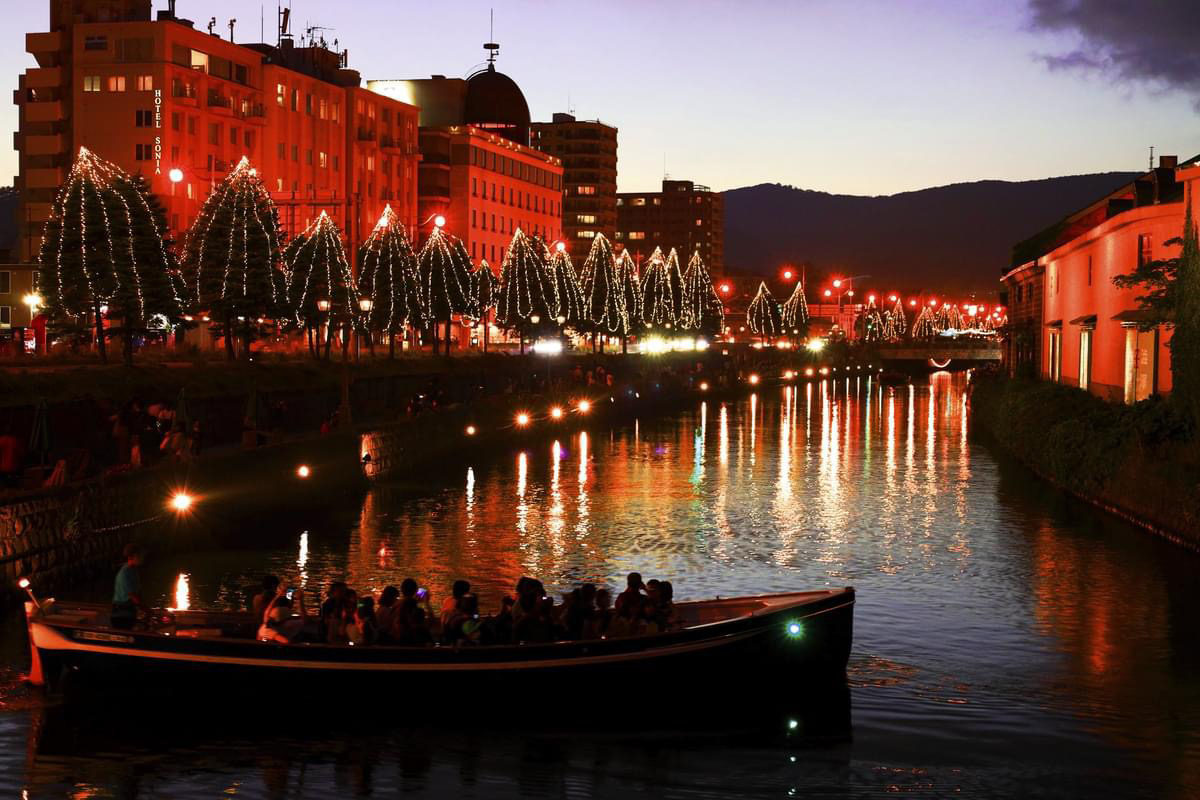
One of the greatest charms of the Otaru Canal Cruise Tour is how the scenery transforms with the seasons and time of day. In spring, the canal’s banks burst into bloom, while summer evenings offer a cool and refreshing cruise. Autumn brings a stunning display of red ivy covering the warehouses along the canal, and in winter, the snow-covered town turns into a fairytale landscape, illuminated by the soft glow of night lights. Be sure to check out the seasonal events and tours that occasionally take place along the canal, adding even more to your experience.
Northern Area: Shukutsu
Otaru’s maritime history is deeply intertwined with its once-thriving herring fishery. Known in Japan as ‘spring herald fish,’ herring would arrive in massive schools from March to May to spawn, turning the coastal waters a milky white—a phenomenon called ‘kuki (群来).’ This stunning display of the blue-green sea signaled the arrival of spring, and during these few months fishermen could earn enough to support themselves for the entire year.
The wealth from the herring industry led to the construction of opulent mansions by the herring tycoons, many of which remain in the Shukutsu area. Among these is the historic Old Aoyama Villa, a well-preserved residence that offers a glimpse into the opulent lives of these tycoons. Referred to as ‘the north’s art mansion,’ it showcases the Aoyama family’s refined taste in art, with masterful paintings on the fusuma sliding doors, intricately carved wood panels, and beams that seamlessly connect to the pillars. The villa is now a Registered Tangible Cultural Property of Japan.
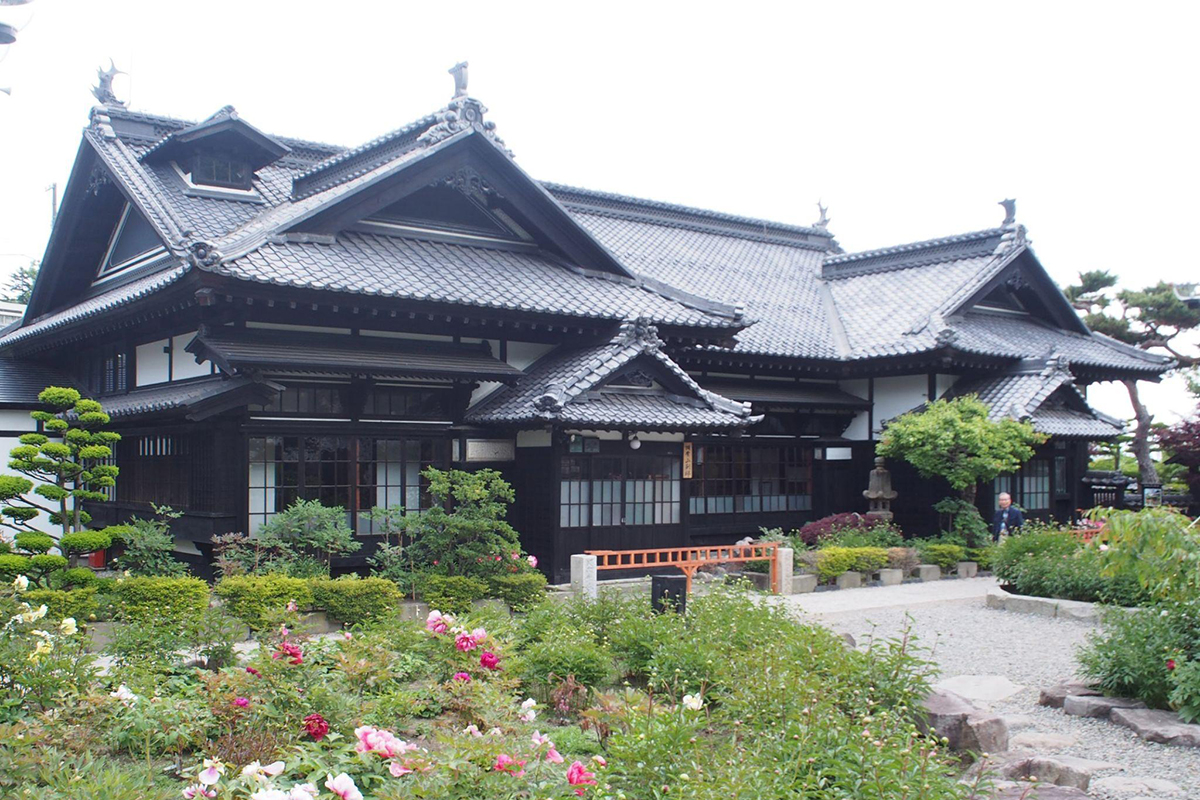
While herring fishing was pivotal to Otaru’s development, the industry peaked in 1897 before declining sharply, with the last confirmed sighting of ‘kuki’ in Otaru occurring in 1954. In recent years, however, there have been signs of the herring’s return. Since around 2000, ‘kuki’ has been observed occasionally and has even become a yearly event. Lucky observers may spot ‘kuki’ from JR trains passing through Otaru, so keep an eye out for this fascinating natural phenomenon.

For a more artistic take on ‘kuki,’ visit Kim Glass Design, a highly recommended glass studio in Otaru. Naoki Kimura is a unique glass artist, always pushing the boundaries of creativity in ways I’ve never encountered before. His bold and contemporary works are created in a studio right by the sea in a fishing village. The pieces are both powerful and gentle, infused with the essence of nature—seemingly opposite qualities that come together in these rare and extraordinary creations. Spend time exploring the atelier, selecting a piece, or even creating your own glass artwork—an enriching experience for visitors. I’ve brought many friends here, all of whom have been enchanted by the stunning pieces, including the beer cup I made myself!

Otaru’s seafood scene extends beyond herring. The Shukutsu area is renowned for its locally harvested scallops known as ‘otate.’ Popular spots such as Aotsuka Shokudo, which offers a range of dishes and accommodation, and Rinyu Morning Market, the earliest opening market in Otaru, are excellent choices. Although the market is small, it provides a diverse selection of fresh seafood. At Asaichi Shokudo within the market, you can enjoy affordable and fresh seafood set meals. Don’t hesitate to ask the staff to help you select some of the market’s freshest ingredients to sample with your meal!
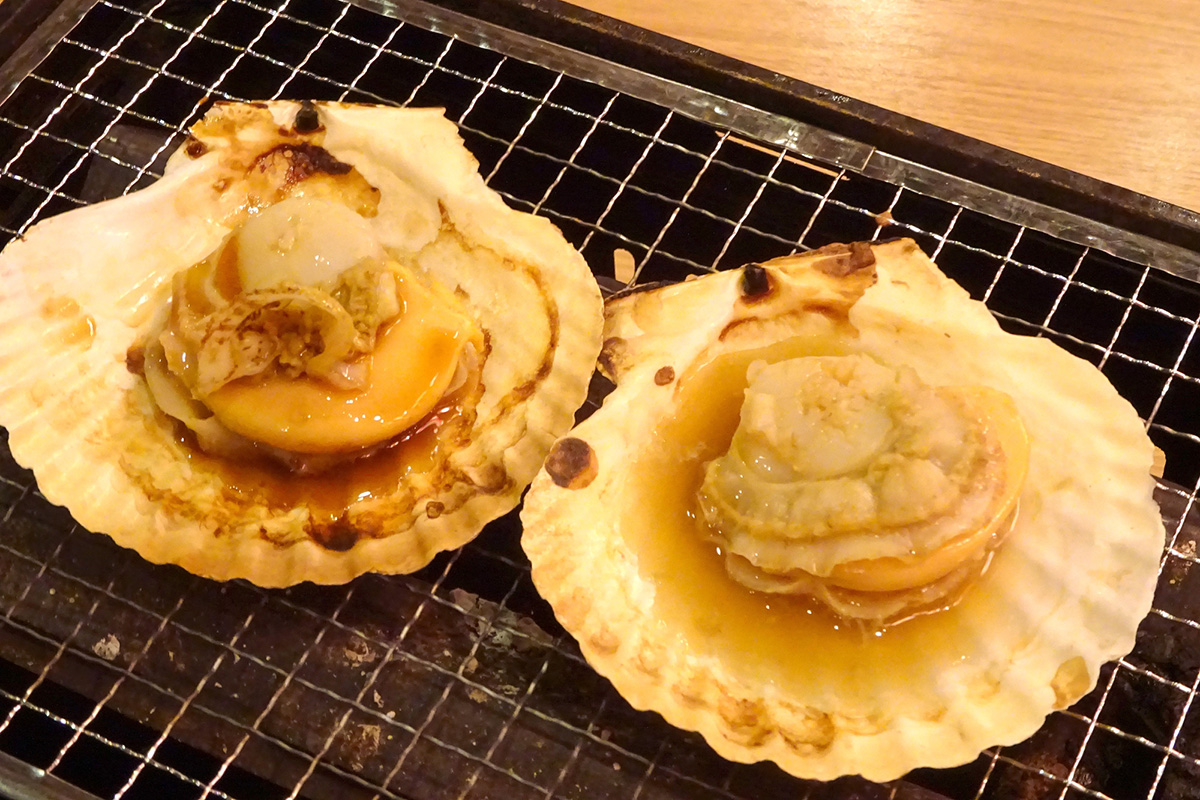
Western Area: Ranshima, Shioya, and Otamoi
The west coast of Otaru is part of Hokkaido’s only marine park, the Niseko-Shakotan-Otaru Kaigan Quasi-National Park, celebrated for its breathtaking sea views and uniquely shaped rocks. This region’s history dates back to the late Jomon period, with stone circles in Otaru believed to be around 3,500 years old, adding an intriguing layer to its coastal allure.
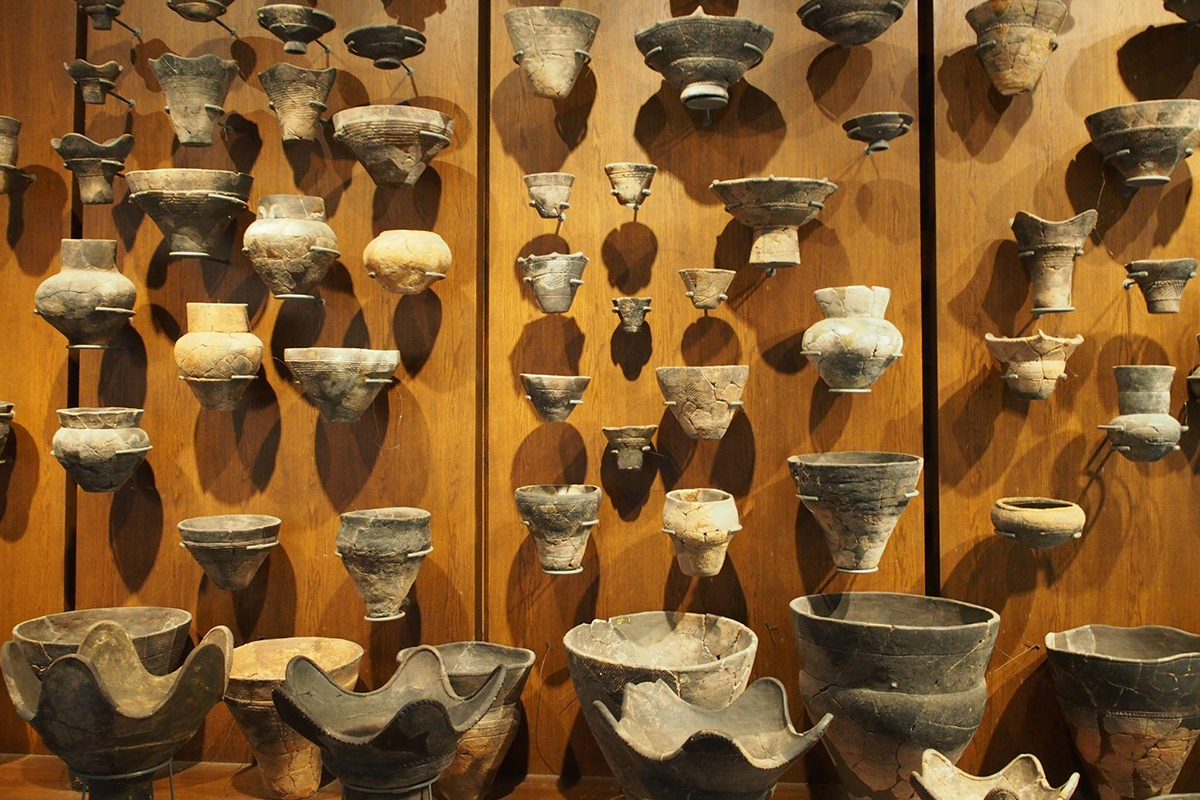
Ranshima
Despite Otaru’s reputation for canals and historical buildings, it surprises visitors with Ranshima Beach, Hokkaido’s oldest beach with over 100 years of history. Located just a 20-minute drive from downtown, the beach boasts clear, shallow waters, a vast sandy stretch of over 800 meters, and a variety of amenities. Visitors can rent BBQ sets or tents for an overnight stay, and the sunset over the Shakotan Peninsula is particularly breathtaking. With minimal light pollution, the beach also offers a chance to view the Milky Way on clear nights.
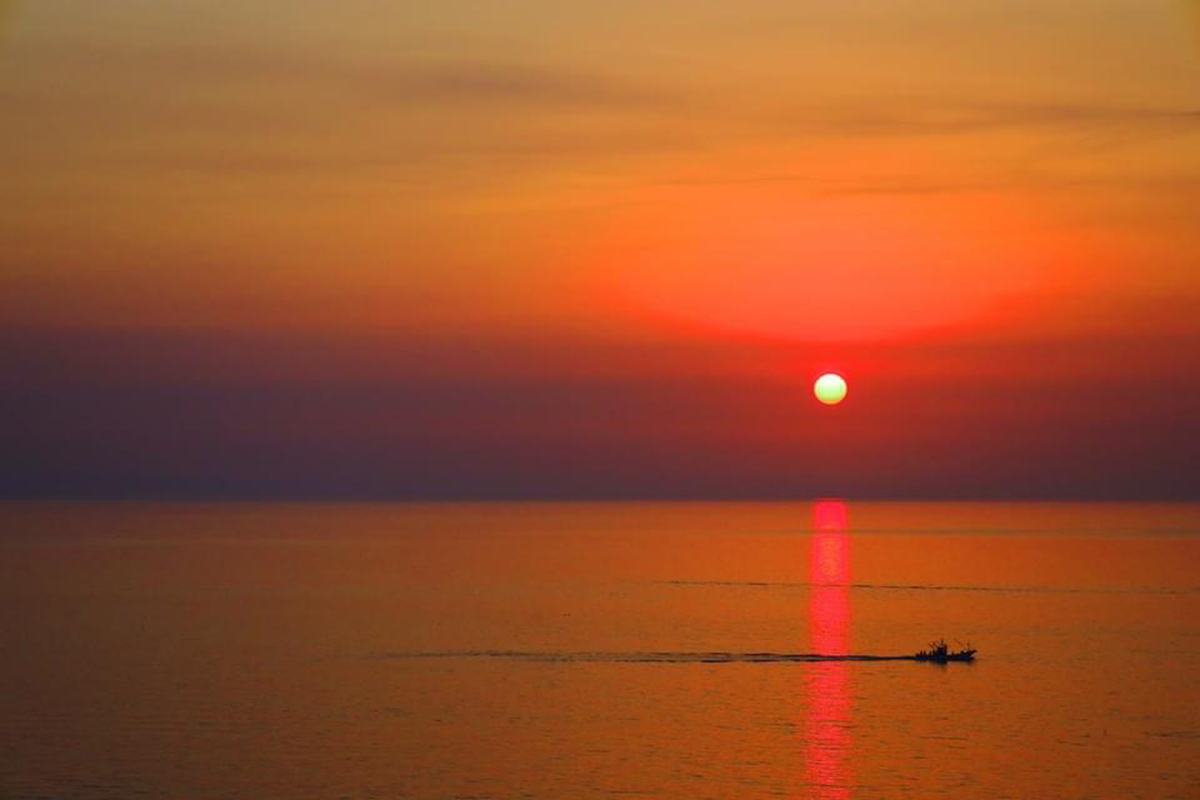
For a special treat, visit Topenpe, a summer-only shaved ice shop. Topenpe, which means ‘sweets’ in the Ainu language, serves exceptional shaved ice topped with locally sourced fruit syrups—perfect for cooling off on a warm day!
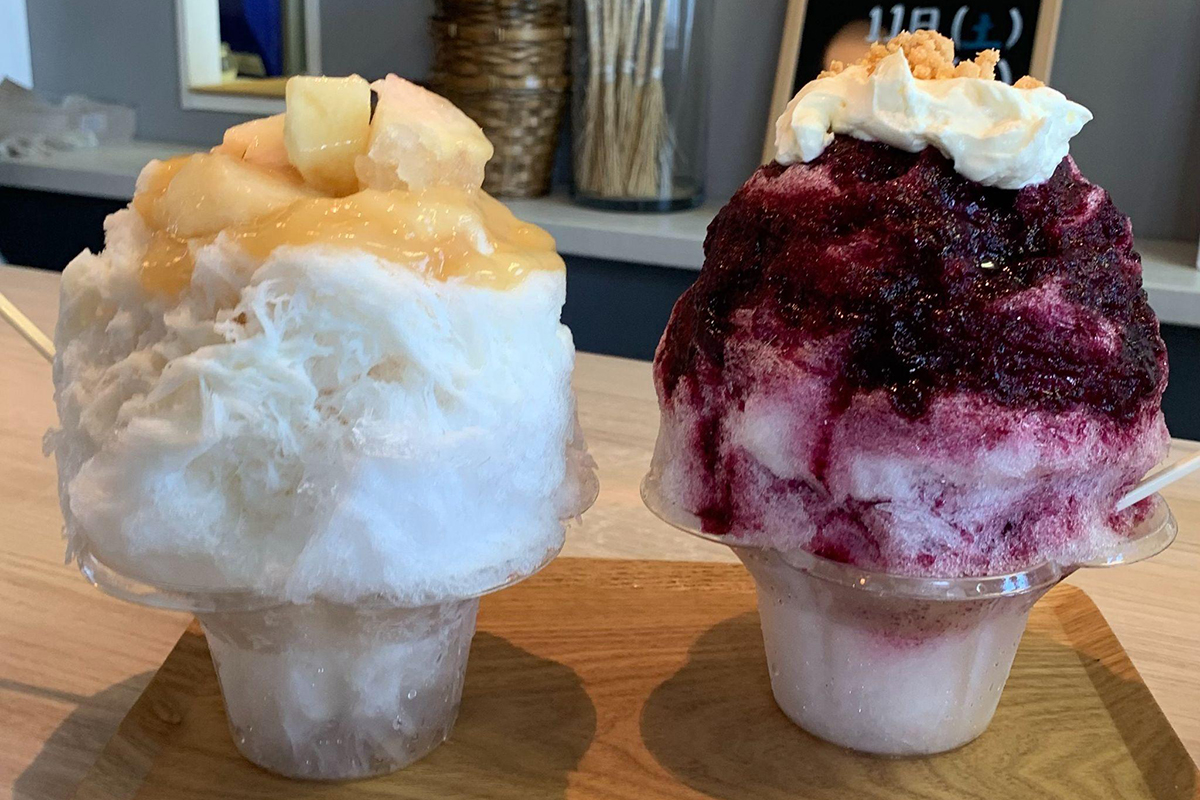
Shioya
While Otaru’s vibrant history often takes center stage, the western areas, including Ranshima and Shioya, offer their own captivating stories. The mystical Shioya Coast features the increasingly popular Blue Cave tour. This natural wonder, sculpted entirely by nature, remains untouched by human hands. Inside the cave, sunlight creates a magical effect, making the water glow with a brilliant blue hue. This mesmerizing sight is the result of unique rock formations and light reflecting off the ocean floor, and it can only be experienced in a few special places. You can explore the cave through various tours, including sea kayaking adventures or cruises. For a more comfortable experience, consider booking a tour with an English-speaking captain, who will ensure both a memorable experience and your safety. The breathtaking beauty of the Blue Cave will create lasting memories. Additionally, the Shioya Coast offers exciting marine activities such as rafting and stand-up paddleboarding (SUP).
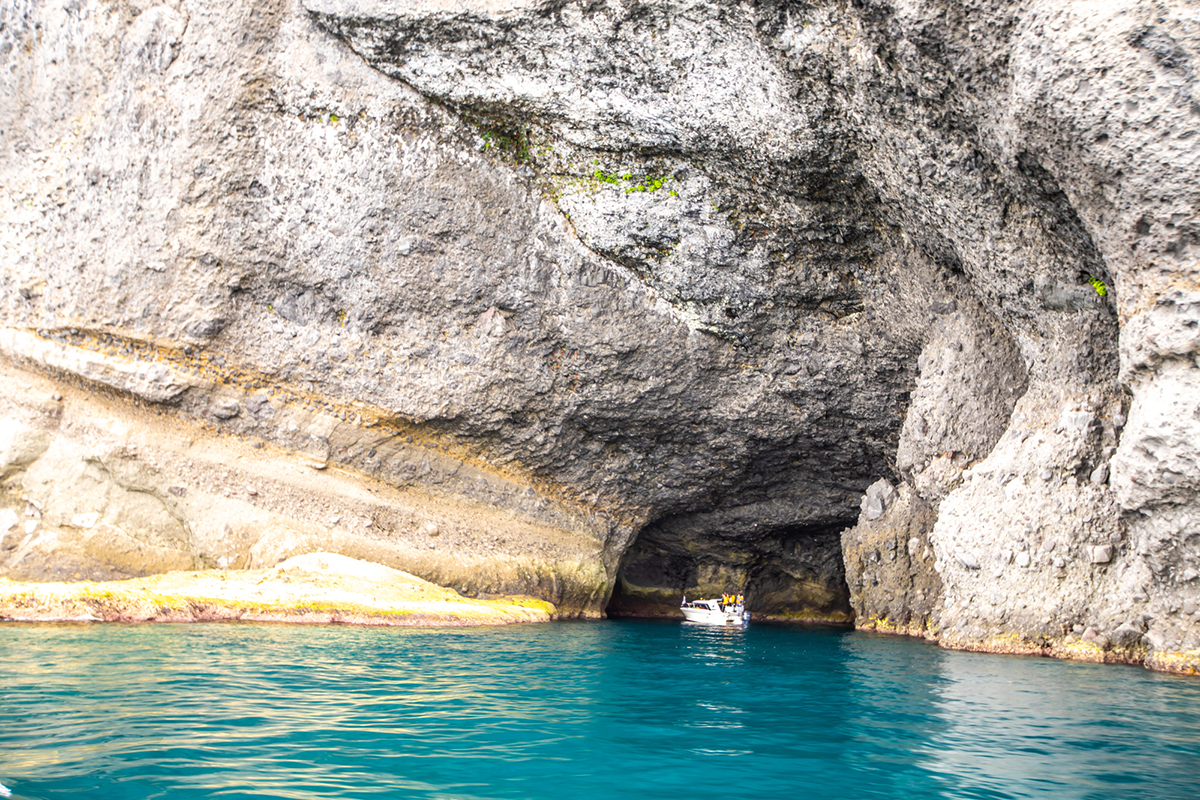
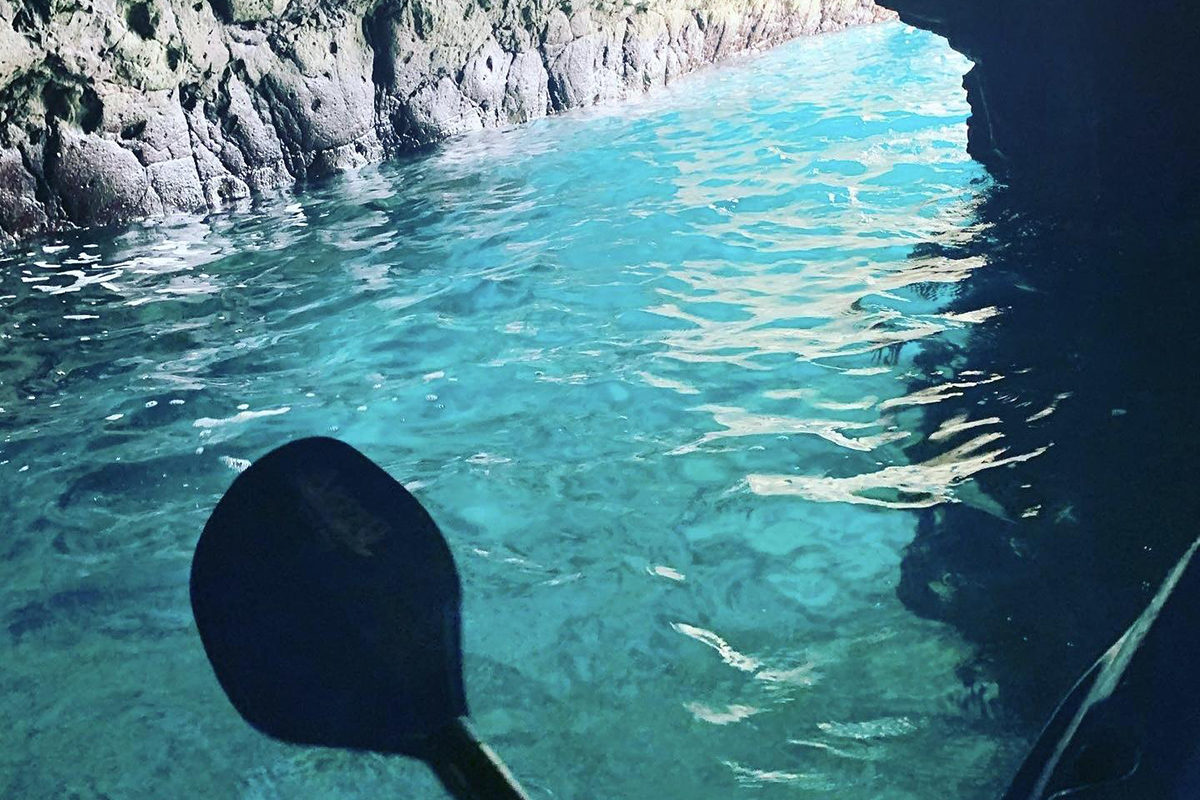
Beyond the Blue Cave, Shioya is celebrated for its stunning coastal scenery and rich local traditions. The Shioya Coastline, with its rugged cliffs and tranquil bays, is perfect for exploring on foot. Just 15 minutes from JR Shioya Station, Shioya Maruyama mountain rises to a height of 629 meters and is beginner-friendly, offering breathtaking panoramic views of the coastline from its summit. From here, you can take in the natural beauty of the sky, sea, and mountains all at once. Additionally, Shioya Shrine, with its 350-year history, hosts a unique festival in July featuring a procession with nearly 160 years of tradition—an experience you won’t find anywhere else in the city.
For accommodation, consider Geihinkan, a hotel with a prime location right by the sea. They offer a convenient day-trip BBQ plan, allowing you to enjoy a hassle-free meal with beer. At the hotel’s Restaurant Ao, you can savor exquisite French cuisine made with fresh Hokkaido seafood, providing a luxurious and relaxing dining experience. Just take a look at one of the beautiful dishes from my visit this summer!


Otamoi
Otamoi, a name derived from the Ainu language meaning ‘sandy inlet,’ has a fascinating history. Nearly 90 years ago, it was home to the Otamoi Amusement Park, featuring a grand three-story restaurant called Ryugukaku, dramatically perched on steep cliffs. This impressive structure, with its multiple pillars extending over the sea, seemed like something out of a fairy tale. Although the building was destroyed by fire and no longer stands, the area is undergoing exciting redevelopment. Plans include constructing Otamoi Terrace, an observation facility, and an exhilarating zipline that will allow visitors to soar 800 meters across the sky above an 80-meter drop, offering stunning views of the cliffs and the Sea of Japan. Otamoi is set to captivate visitors once again with its charm.

The stunning Shakotan Blue waters not only captivate visitors but also inspire local artists. Otaru-based ceramist Kazuhiro Mitsu beautifully captures this vibrant hue in his Shakotan Blue series of plates and mugs, available at select shops like the elegant UNGA Plus and the artisanal boutique Fine Craft. His creations bring a touch of the sea’s beauty into everyday life, reflecting the region’s rich artistic spirit.
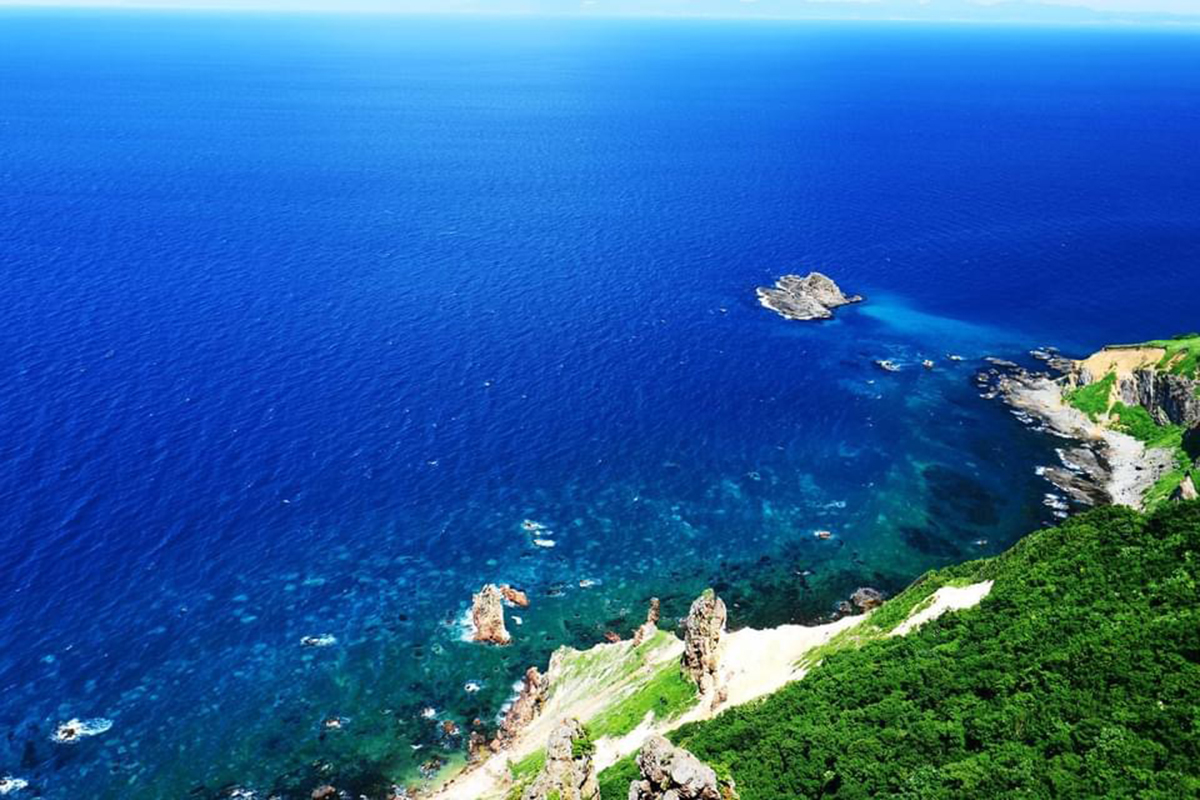

Eastern Area: Otaru-Chikko and Zenibako
Otaru-Chikko
Rising prominently on the eastern side of Otaru Port is Hiraiso Cape. At its base lies the Chikko district, a newly developed urban area that combines various functions, including retail, entertainment, accommodation, and residential spaces. The district features numerous waterfront facilities, such as the Otaru Marina and Chikko Seaside Park, making it a popular destination for both locals and tourists. As a new hub of tourism in Otaru, the district is bustling with activity and attracts many visitors.
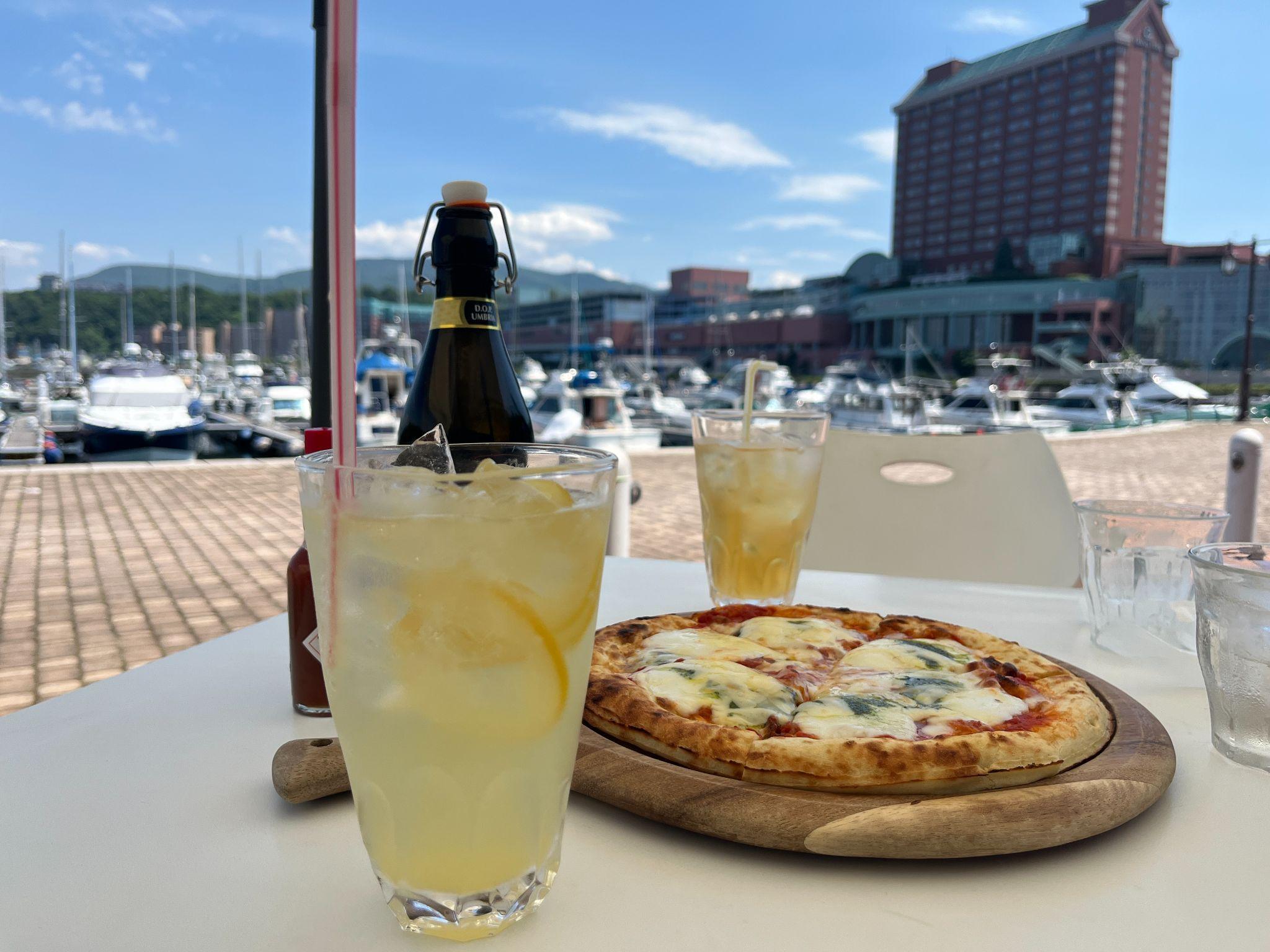

One of Otaru’s three main JR stations, Otaru-Chikko, is conveniently connected to a large shopping mall. On the fourth floor of the mall, you’ll find Wing Bay Camp Garden Umi to Sora, which is open only during the summer. They offer reservations for both glamping stays and premium BBQs, where you can relax with refreshing sea breezes and stunning views. Indulge in luxurious seafood, hearty meats, fresh vegetables, and delicious desserts while taking in the beautiful sea and sunset—the experience is truly special! During my visit at night, I even had the chance to enjoy a fireworks display!
Right in front of this shopping mall is the yacht harbor, Otaru Port Marina, Otaru’s base for marine leisure. The marina not only provides boat owners with storage and full maintenance services but also offers tours and charters. You can book a 3- to 5-hour chartered cruise around the Shakotan Peninsula, where you can admire the unique rock formations of Otamoi and Shukutsu, as mentioned earlier. The sunset cruises are particularly special, allowing you to savor a magical time as the sun sets over the Sea of Japan.
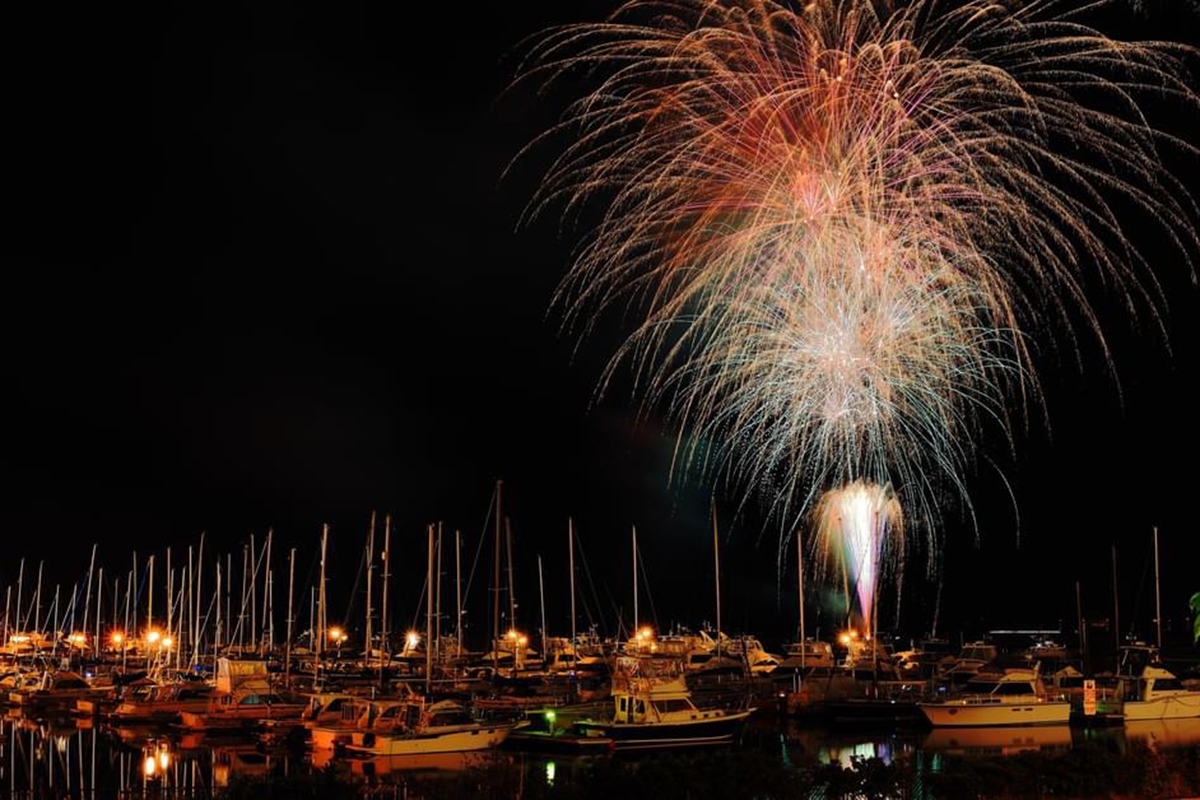
The marina operates year-round, but don’t miss the seasonal Trattoria Della Marina, Otaru, open only in the summer. It’s a popular spot where you can relax by the summer sea and enjoy fresh seafood and vegetables sourced from local ports and farms, along with the region’s increasingly popular local wines.
Looking up from the marina, you’ll spot Ginrinsou on Hiraiso Cape, a historic building reflecting the prosperous era of herring fishing. Originally relocated from Yoichi Town over 80 years ago, this valuable structure offers a glimpse into the region’s history. In 2023, it was designated as a Tangible Cultural Property by the Japanese government. Ginrinsou is cherished as a luxurious ryokan, where guests can experience top-tier hospitality. You can unwind in natural hot springs sourced from 1,300 meters underground while taking in breathtaking ocean views. The ryokan also offers day-trip packages, including a French lunch featuring fresh local ingredients, for a truly delightful and relaxing experience. When you visit, you’ll be captivated by the timeless scenery and the splendid atmosphere of this historic and elegant retreat.

A few minutes’ walk from Ginrinsou, you’ll find my favorite glass studio, Yukie Glass. This charming atelier is nestled in a small forest and offers a stunning view of the sea from its hilltop location. Since visits are by appointment and require a purchase, it’s best to browse Yukie’s works on the website beforehand, share your preferences with her, and see them in person at the studio. Unfortunately, if you wish to buy online, delivery is limited to Japan. The artist’s exquisite, nuanced colors and delightful motifs are sure to captivate you, and you’re bound to discover a one-of-a-kind piece that resonates with you. Engaging with her during your visit offers a luxurious, personalized experience.
If your schedule doesn’t align or you’re unable to visit the atelier, consider stopping by the former Mitsui Bank Otaru Branch, part of the Nitori Art Base in downtown Otaru. Here, you can also admire and purchase some of her pieces in a beautiful, modern architectural setting.
Zenibako
Zenibako, located midway between downtown Sapporo and Otaru, is a trendy area popular with surfers and those who enjoy stand-up paddleboarding (SUP). The long, sandy beach in this area is just a short walk from JR Zenibako Station, making it a beloved swimming spot that gets particularly busy during the summer season. Recently, the area has seen an increase in unique cafes and bakeries, including fire pit cafes, where you can relax and enjoy the cozy suburban atmosphere at your own pace.
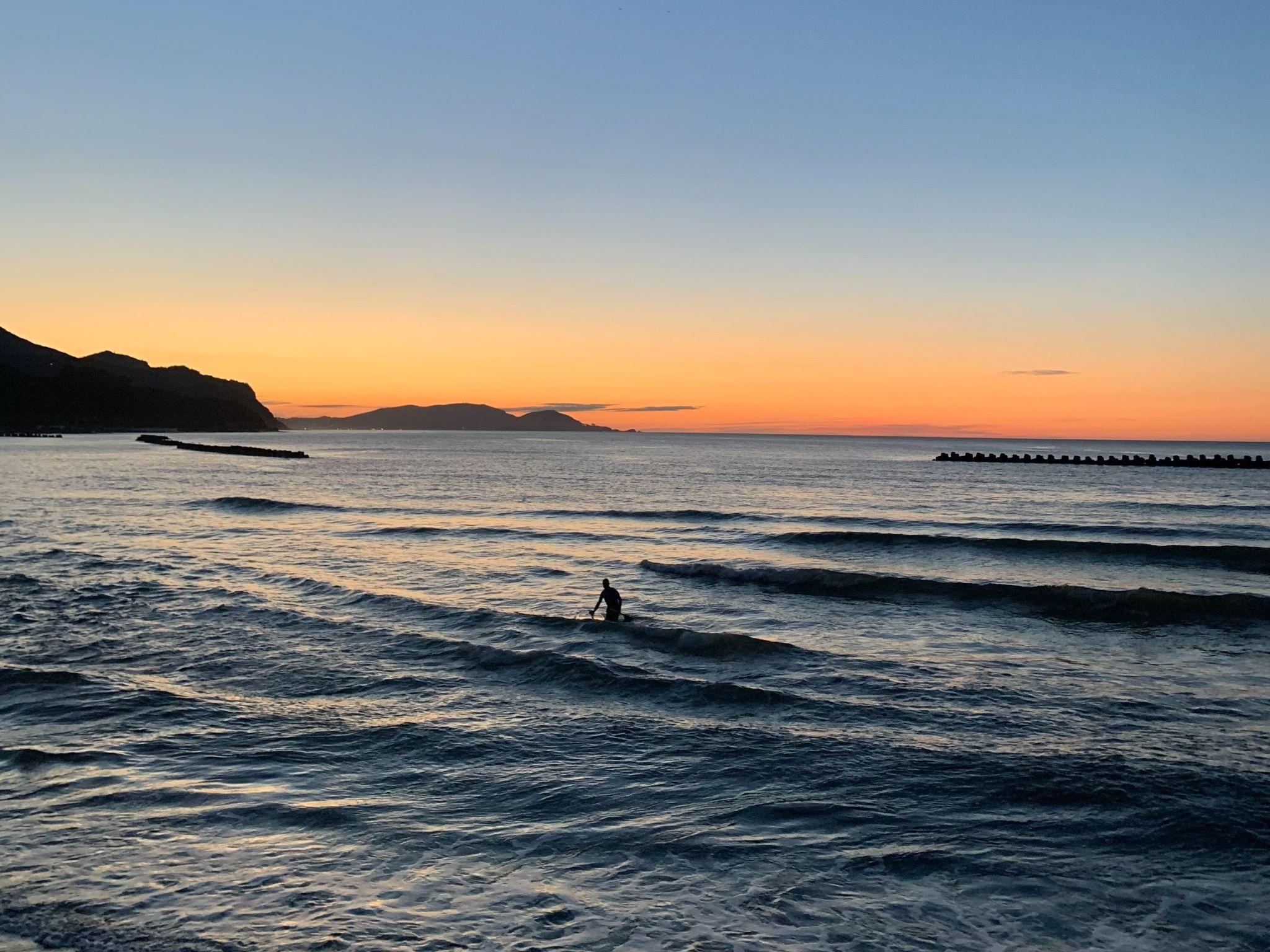

The name Zenibako, which literally means ‘money box,’ is said to derive from the money boxes once stored in fishing houses, reflecting the area’s prosperity during the herring fishing boom. The history of this region dates back to the Edo period. For nearly 30 years, until 2010, a large zenibako (money box), a symbol of the town, hung on the station platform. Today, it’s displayed inside the station. If you have the chance, be sure to check out this lucky money box.
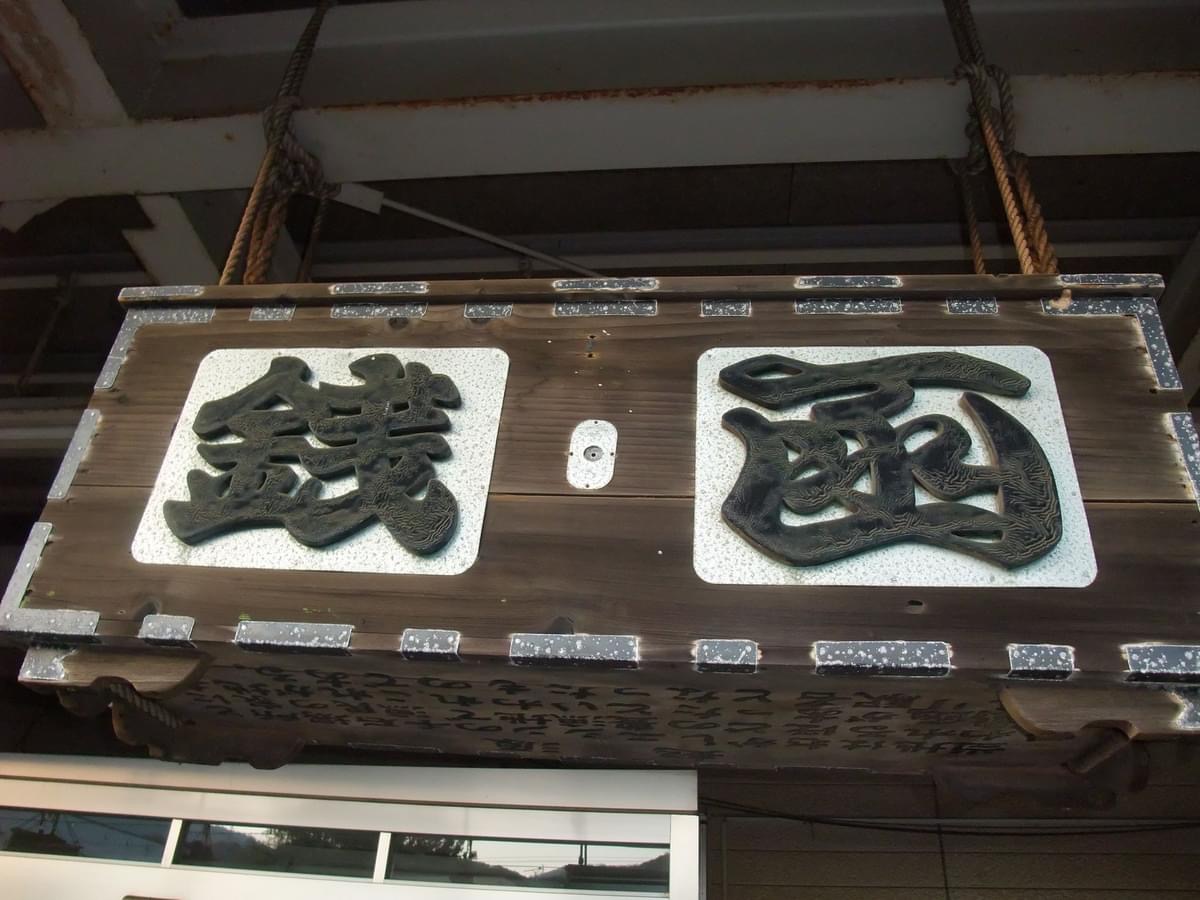
Mount Tengu
Why talk about a mountain instead of the sea? You’ll see! From Mount Tengu, a 532-meter peak located about 3 kilometers inland from the coast, you can enjoy a panoramic view of Otaru’s entire coastline. From here, you can see how Otaru’s port is encircled by mountains on three sides, with Mount Tengu standing at the heart of it all. It’s easy to understand why Otaru has thrived as a port city for so long.
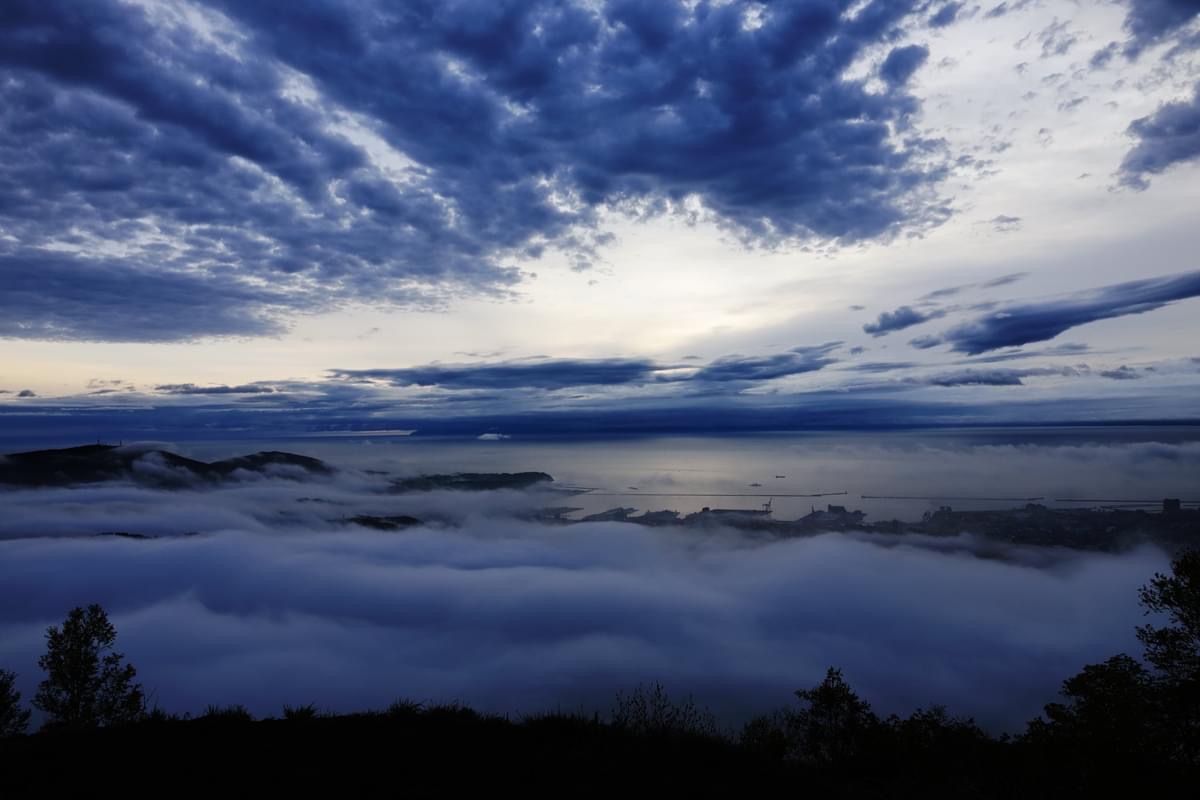
I highly recommend experiencing another kind of sea—the sea of clouds at Mount Tengu. You might think this phenomenon is only visible from high-altitude mountains or airplanes, but here, just 15 minutes from downtown, you can witness this celestial and magnificent view! The sea of clouds often appears early in the morning, so while the ropeway might not be available, you can easily drive up the mountain. If you’re staying in Otaru, be sure to check the summit view camera before heading out. Don’t miss the chance to enjoy this awe-inspiring, divine view in Otaru.
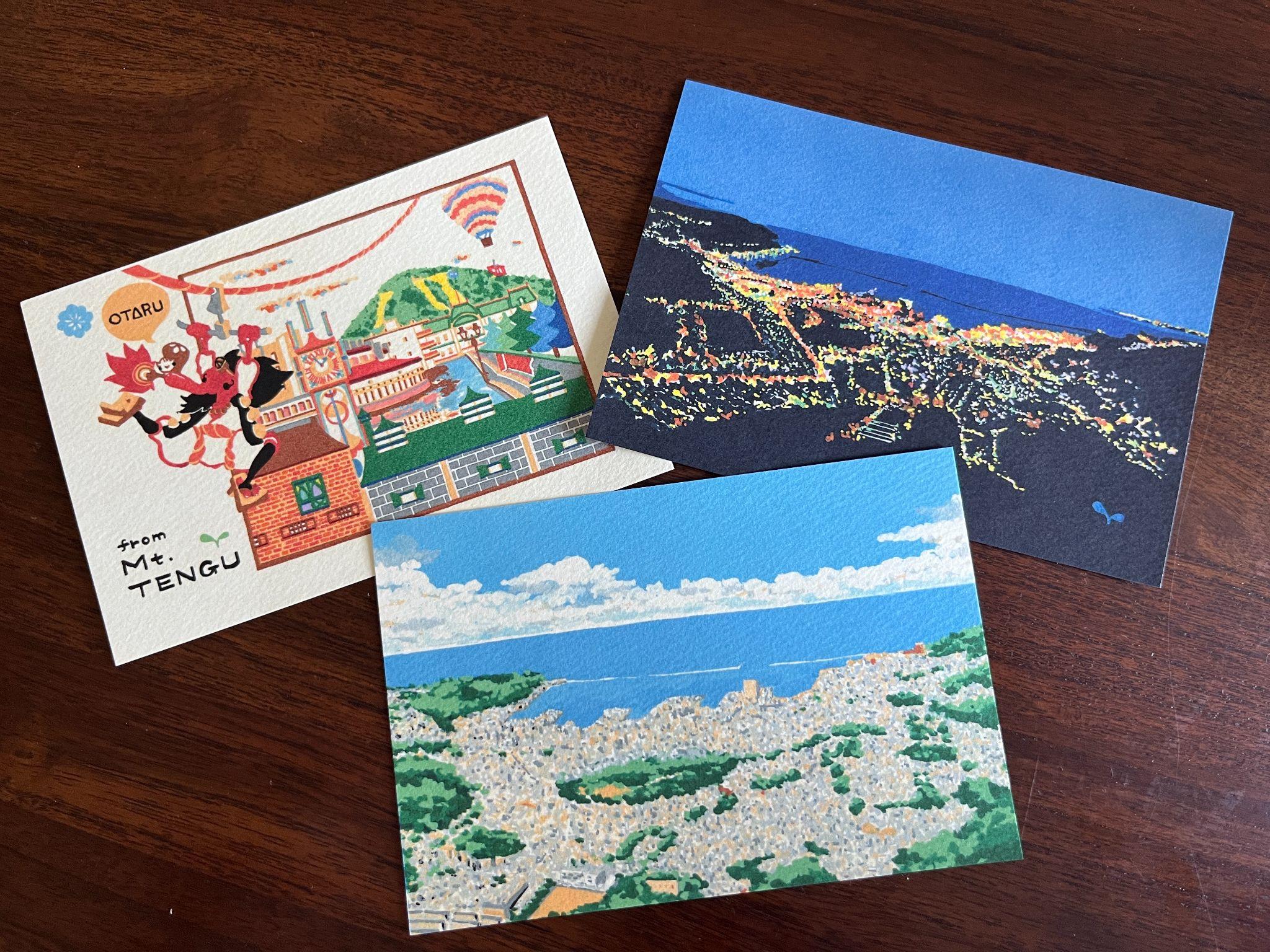
Lastly, I want to introduce you to Hitoshi Horii, an illustrator from Otaru. While Otaru is sometimes described as a ‘sepia city,’ Hitoshi Horii’s illustrations blend cuteness with nostalgia, using bright colors that make them truly unique. I’m a big fan of his work and even use his artwork on my business card! Remarkably, he creates his pieces using only POSCA pens, a type of water-based pigment marker made in Japan. He works by the canal, capturing many of Otaru’s charming buildings and landscapes. If you happen to see him while strolling along the canal, be sure to check out his work—you’ll surely become a fan too!
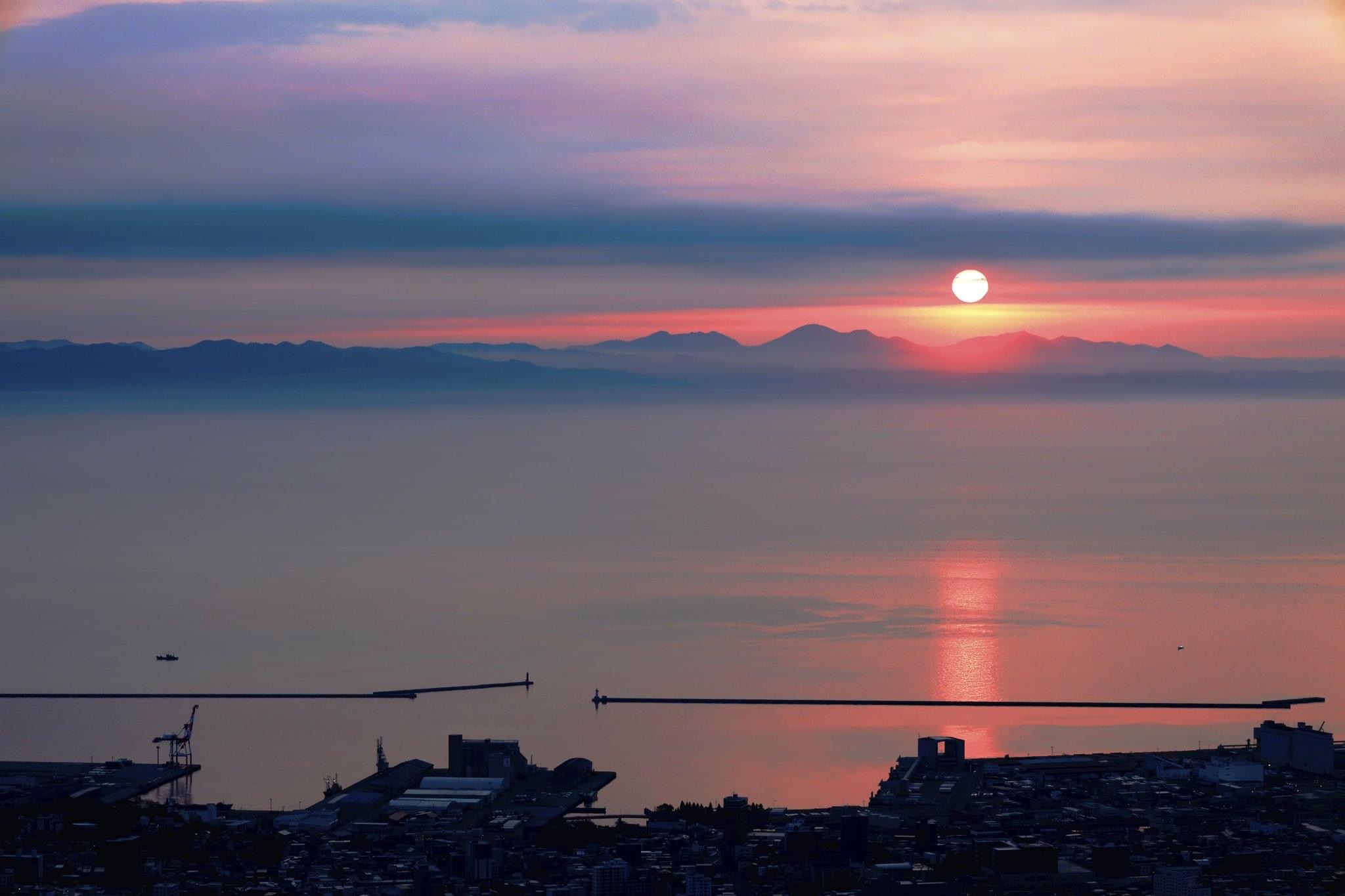
How did you like the guide to Otaru’s seaside spots? The stunning cover photo and other beautiful images were graciously provided by Otaru-based amateur photographer Katsunori Tani. To truly experience the past, present, and future of this charming city, add Otaru to your Hokkaido itinerary. If you’d like to customize a tour incorporating the places I’ve mentioned or tailor it to your interests, feel free to reach out to Hokkaido Treasure Island Travel Inc. We’re always here to assist you. See you in Otaru!
